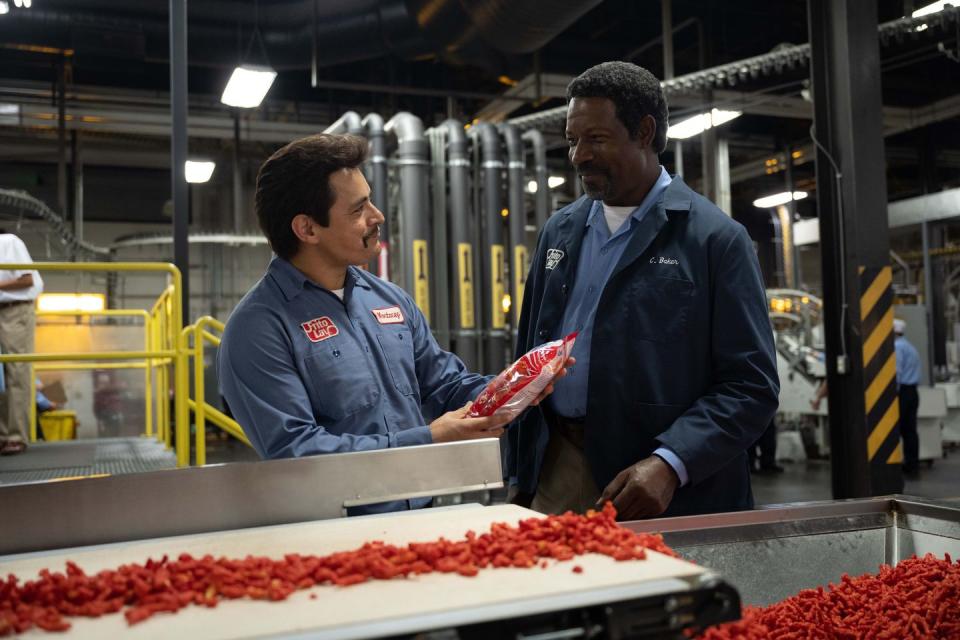The (surprisingly) controversial story behind Cheeto film Flamin' Hot
Eva Longoria’s first narrative feature as a director, Flamin' Hot, has a pitch-perfect tale of ambition and ingenuity at its centre. Adapted from Richard Montañez's book, A Boy, A Burrito, and a Cookie, it recounts his climb from the rank of Frito-Lay janitor to the company's vice president of multicultural sales. It also tells the story of Montañez inventing the Flamin' Hot Cheeto.
According to him, he had the idea to use the same chilli mix traditionally sprinkled over Mexican street corn, put it on Cheetos, and then market the snack to the Latino consumer base. He even called up the chief executive of the company, Roger Enrico, and pitched the idea.
Montañez had a tough time securing the support of the white-collar boardroom but, eventually, he prevailed. The Flamin' Hot Cheeto, as Longoria herself told Digital Spy, went on to become "a multibillion-dollar product that has gone past snacks. There's a makeup line, there's Mountain Dew, there's sushi, there's ice cream, there's mac and cheese. This Flamin' Hot brand has taken over."
However, weeks before the cameras were set to roll on Flamin' Hot – with Jesse Garcia in the role of Richard and Annie Gonzalez as his wife, Judy – an exposé by The Los Angeles Times added a sudden twist to the tale: it claimed Montañez didn't, in fact, invent the Flamin' Hot Cheeto.
Frito-Lay, as part of the article, issued a statement that read: "We have interviewed multiple personnel who were involved in the test market, and all of them indicate that Richard was not involved in any capacity in the test market. That doesn't mean we don't celebrate Richard, but the facts do not support the urban legend."
The Flamin' Hot Cheeto, according to The Times, was actually created by a team in the Midwest years before Montañez ever dialled Enrico's office. A junior employee, Lynne Greenfeld, said she came up with the name; a salesman named Fred Lindsay claims he was the one who first pushed Frito-Lay to invest in spicy products, in response to the regional varieties already on sale in corner stores of Chicago and Detroit.

That said, the truth may not be all that straightforward. Al Carey, former CEO and president of Frito-Lay North America, defends Montañez in the article and argues that, even if a Flamin' Hot product did already exist on the market, Montañez was still key to the success of the spicy Cheetos that sit on shop shelves today. "Without Richard, this thing would not be out there," he told The Times.
Carey's position is somewhat supported by a supplementary statement Frito-Lay gave to NPR, in the aftermath of The Times article. It does look like Montañez was involved in pitching a spicy product at the factory where he worked, in California, but the company "can't draw a clear link between" that pitch and the development by the Midwestern team.
"We do not credit the product creation to him and him alone," Frito-Lay told The Times. "He was a part of it. Yes. Sure." So there you have it. How much is Flamin' Hot an embellishment of what really happened? It's not entirely clear. But Hollywood never let the truth get in the way of a good story.
Flamin' Hot is streaming now on Disney+, and is also available on Hulu in the US.
You Might Also Like

 Yahoo Sports
Yahoo Sports 